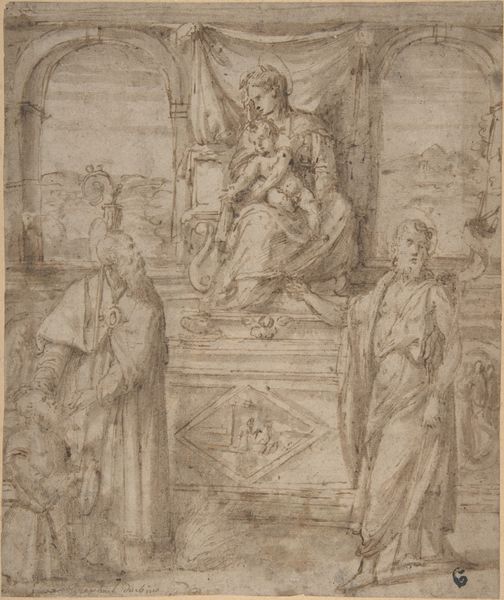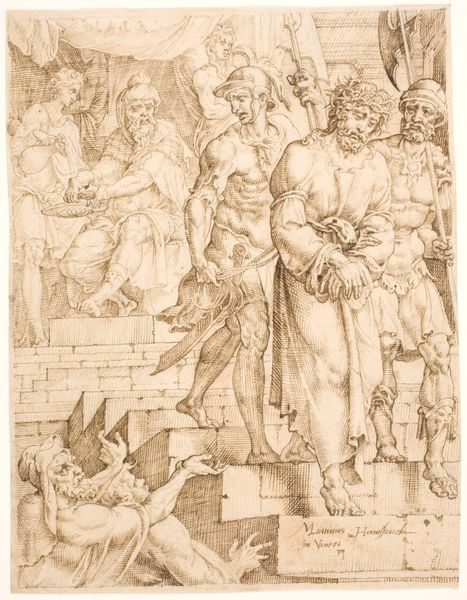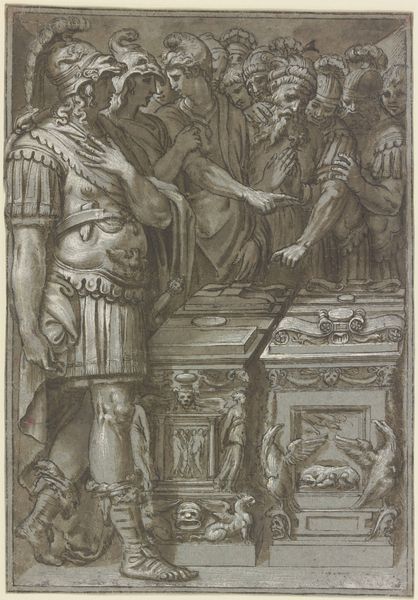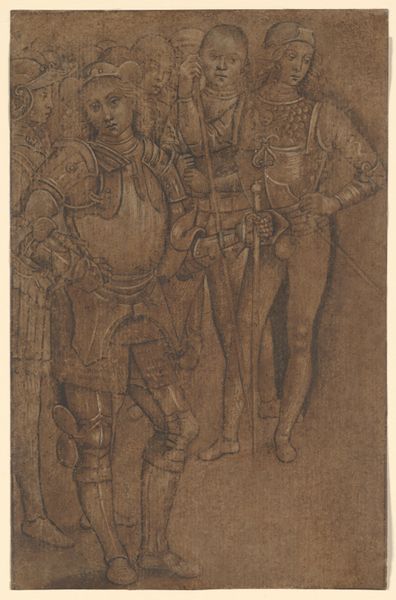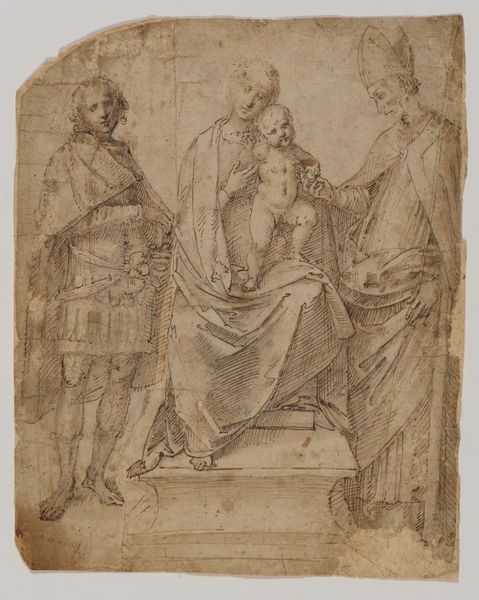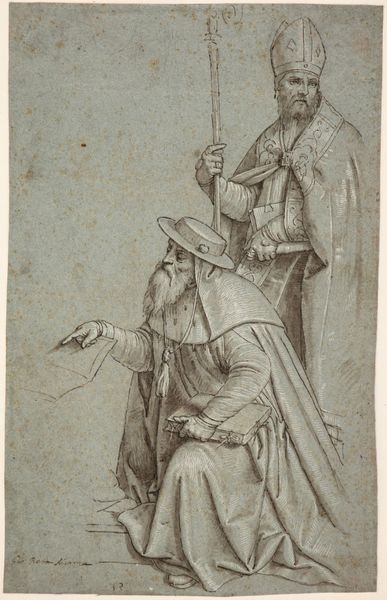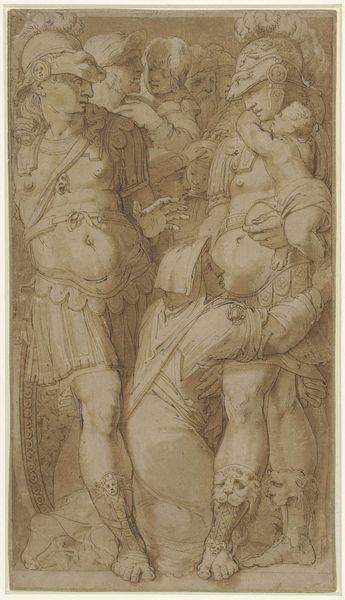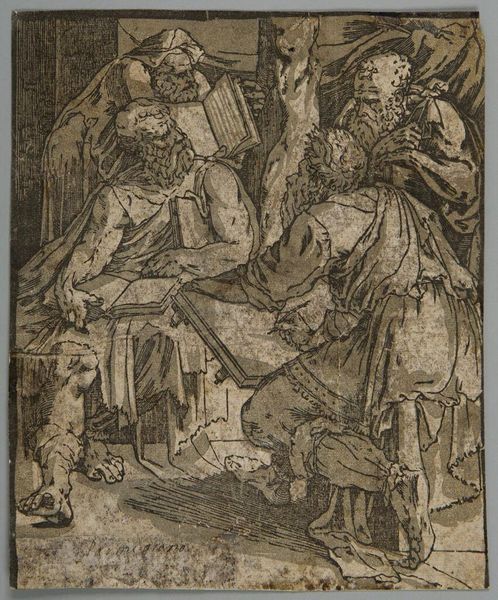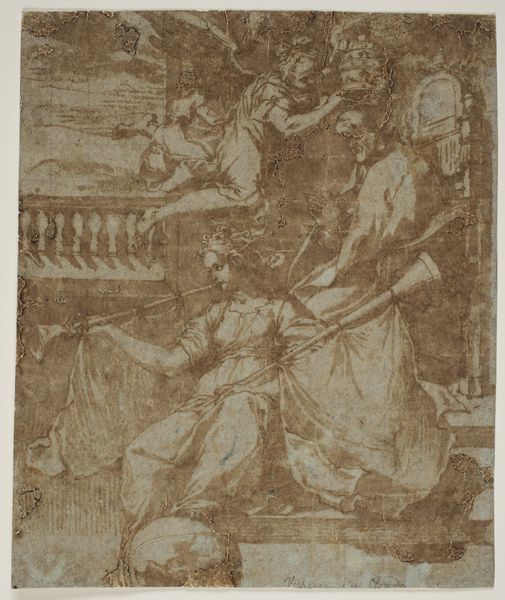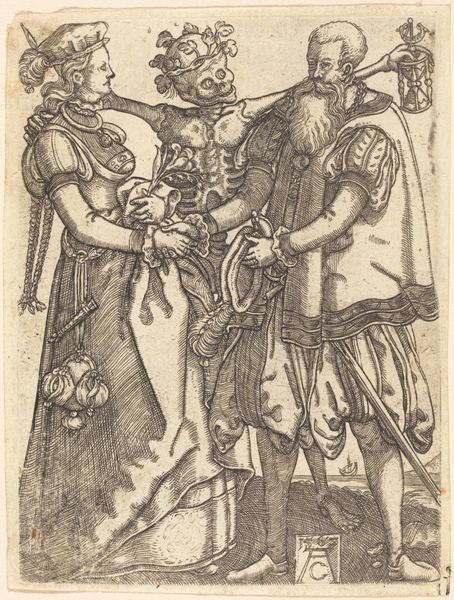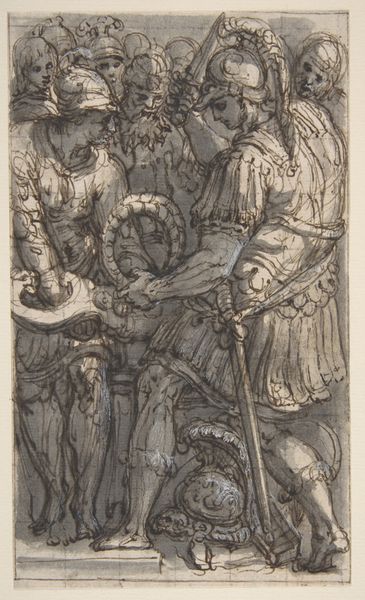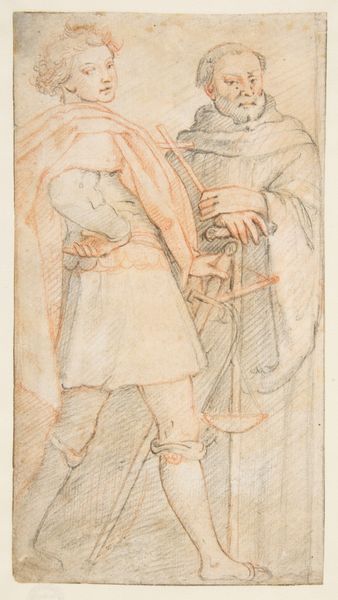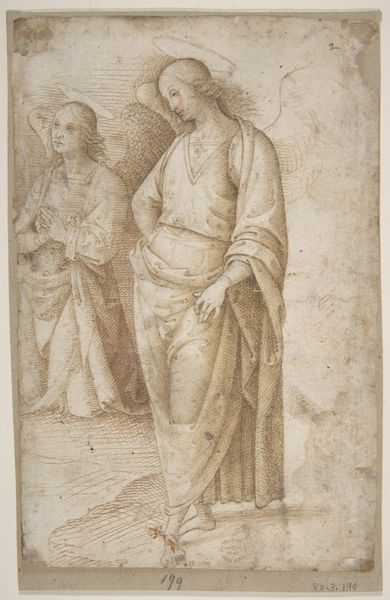
Two Princes of the House of Este: Ernest VI and Francis II 1513 - 1583
0:00
0:00
drawing, print, charcoal
#
portrait
#
drawing
# print
#
charcoal drawing
#
11_renaissance
#
group-portraits
#
charcoal
#
history-painting
Dimensions: 8 3/4 × 4 15/16 in. (22.3 × 12.6 cm)
Copyright: Public Domain
Curator: Allow me to introduce "Two Princes of the House of Este: Ernest VI and Francis II," dating from between 1513 and 1583, now residing at the Metropolitan Museum of Art. It is attributed to Pirro Ligorio and executed in charcoal, ink, and wash on paper. Editor: My initial impression is of subdued power, a quiet assertion of nobility rendered in earth tones. I am curious about the artist’s conscious use of a modest material like charcoal. Curator: Indeed. Notice how Ligorio uses layering and hatching to delineate form and space, adhering to an economy of line, thus evoking the Princes' noble lineage. The composition guides the eye to an interesting use of a shared yet indeterminate architectural setting. Editor: Fascinating. Charcoal's friability is at odds with the seemingly lasting status of these noblemen, but charcoal allowed the artist to create subtle tones and contrasts with simple, affordable tools. I can see that its very physical properties lend itself to notions of ephemerality amidst assertions of heritage. It hints at a world outside grand pronouncements. Curator: I understand your reading. Note the strategic placement of light and shadow across their garments. There's a semiotic weight in the contrast, communicating power dynamics, as is the detail in their ornamented clothing, drawing our eye through different stages of focus. Editor: I wonder if charcoal's commonness during that time allowed for broader access to portraiture. It isn't a painting in the traditional, luxurious sense, but offers status via reproducible means. Consider that printmaking, as it intersected with drawing and portraiture, had democratic potential despite the elite nature of its subjects. Curator: While prints facilitated wider viewership, let’s not neglect Ligorio's technique. His expert control of chiaroscuro transcends mere representation; rather, he invites contemplation of line, form, and the construction of image as signifier of power itself. Editor: And I suggest, a reflection of artistic practice, as more artisan studios took commissions beyond just the elite! I would argue that the image is inseparable from the mode and means of its creation, and its cultural accessibility as both a product of art, commerce and class. Curator: A persuasive viewpoint! Ligorio clearly imbued the Princes with an air of refined intellect, immortalized here through careful artistic consideration, design, and planning. Editor: Well, it all feels tied to the materiality of its age. Thanks to the charcoal and printing processes, portraits trickled into culture with a newfound, slightly smudged democracy.
Comments
No comments
Be the first to comment and join the conversation on the ultimate creative platform.
